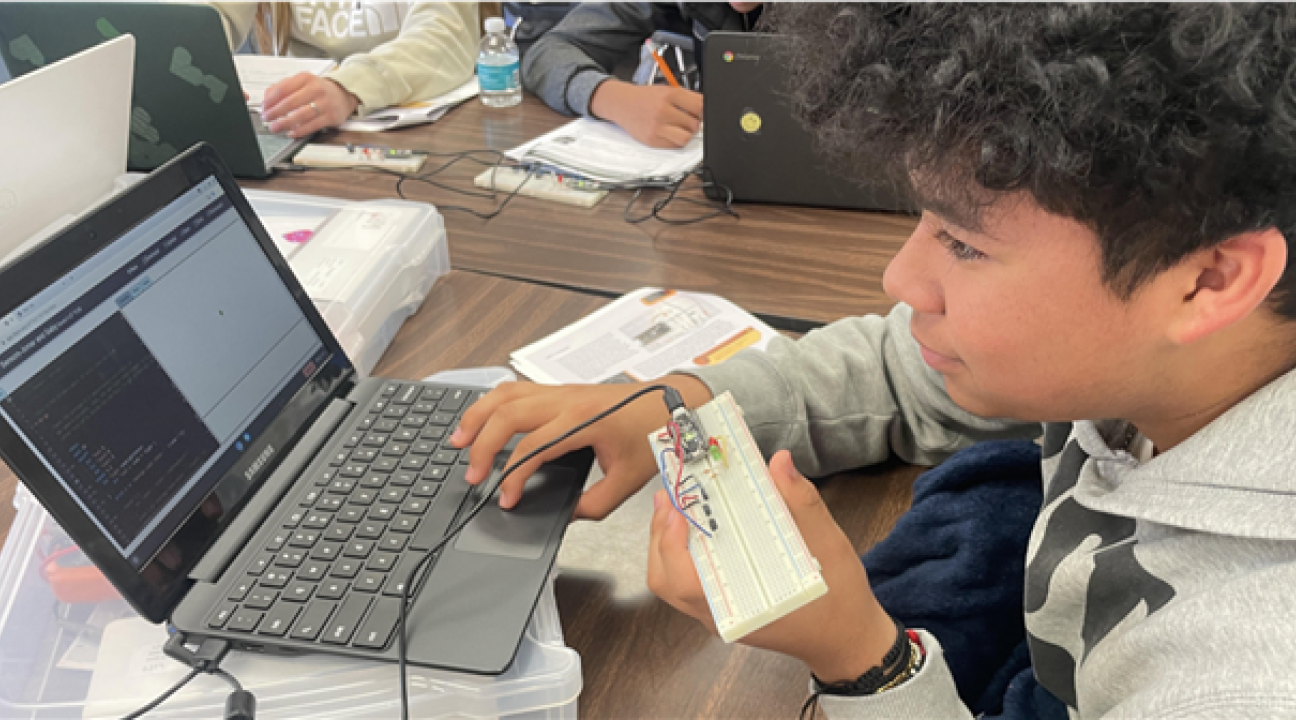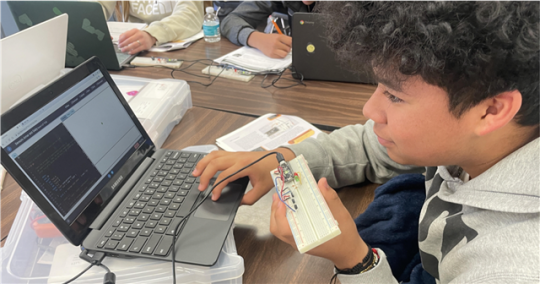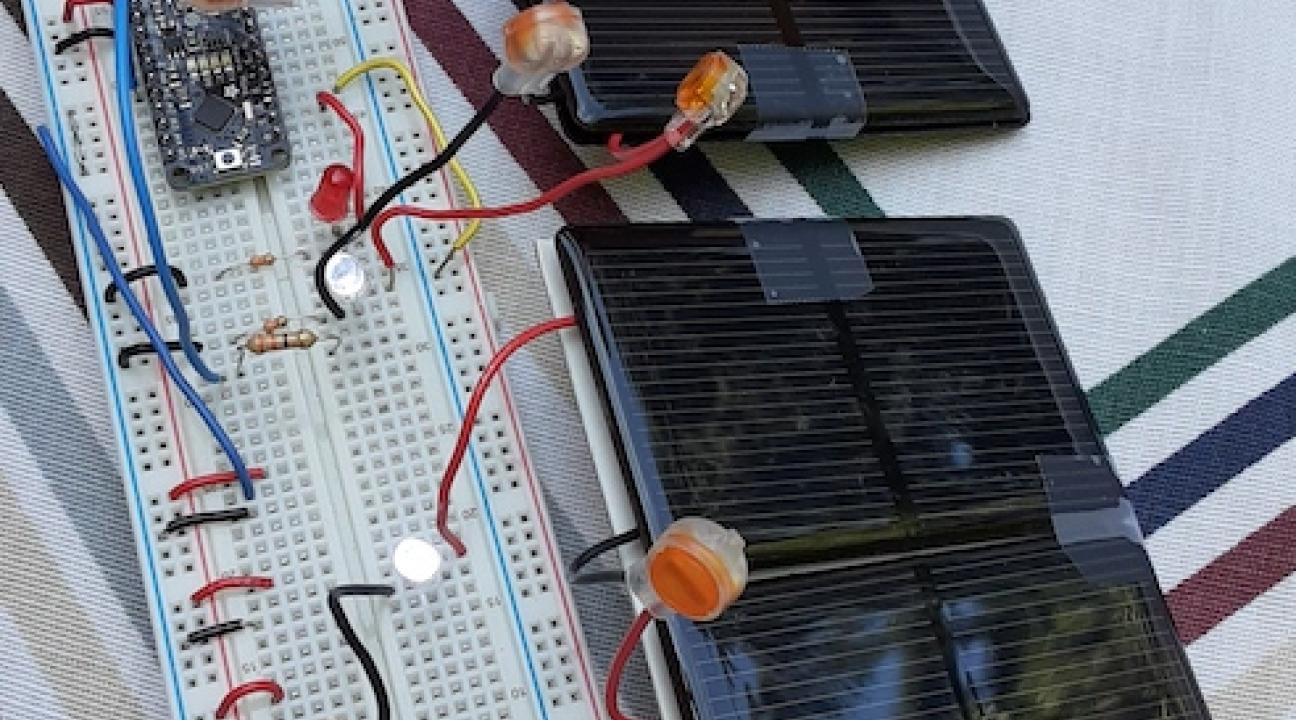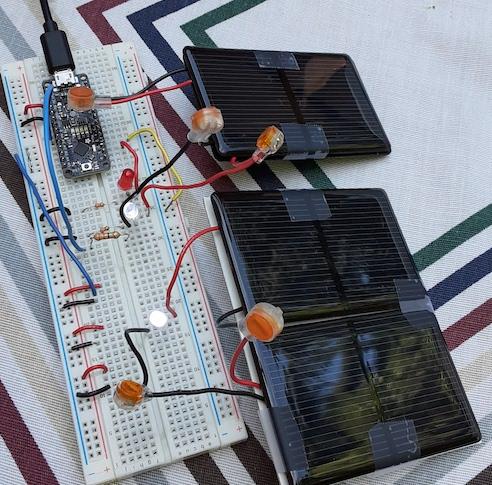Sonoma State receives $7.9 million grant for STEMACES program to expand scope
STEM and Computing Education Support (STEMACES) grant from US Department of Education will expand SSU's innovative science education program, Learning by Making
A $7.9-million grant from the US Department of Education (ED) to Sonoma State University’s STEM and Computing Education Support (STEMACES) program is the result of a decade of success building technology to enable innovative science education and make it accessible to underrepresented students.
STEMACES, which aims to improve middle school student achievement in science and increase the competency of STEM teachers in rural communities, was built on a tech teaching platform funded by two early-phase ED grants.
“Scientists are reliant on technology, and we realized that students needed to know technology to pursue science themselves,” said , director and founder of SSU's EdEon STEM Learning, who has been leading the curriculum development and helped procure the funding from the outset.
“The problem was there was no technology made for the classroom that could support our experiments. So for the first five years, the small SSU team built the software themselves,” Cominsky said.
The resulting year-long integrated ninth-grade curriculum, branded as (LbyM), has evidence of success improving grades in science and math. This success allowed the LbyM team to apply for – and secure – next-level ED funding to expand its scope, said , SSU EdEon’s Associate Director and Principal Investigator for the $7.9-million grant application.
“With the new funds, we will be able to implement elements of LbyM in eighth-grade classes at 40 schools in California and Texas, potentially reaching thousands more rural and underrepresented students,” Peticolas said.
In 2020, the Web Platform Incubator Community Group released an early version of a way to use browsers to communicate with hardware connected to computers’ USB ports.
“We are now able to support the curriculum at one-tenth the cost using common laptops. That is key in rural and other underserved areas, where they don’t have tech in their classrooms,” Cominsky said. “Equity is a focus of any program in EdEon.”
STEMACES will use elements from LbyM to test a model for improved student learning in science, specifically in computational thinking. The model includes teacher professional development, ongoing teacher and student support, and an innovative eighth-grade curriculum that meets science standards in California and Texas while teaching coding, electronics, and methods for using sensors.
“We have learned so much by engaging in an iterative process with the ninth-grade curriculum, and plan to create our own testing tools for this phase, involving both teachers and students in the process,” Peticolas said.
“One of the most satisfying results over time has been seeing how many of our LbyM students are pursuing studies in engineering, physics and astronomy, biology and computer science,” Cominsky said.
The successful new proposal represents sustained efforts with key collaborators and advocates including congressional representatives Jared Huffman and Mike Thompson.
Instrumental players in STEMACES proposal planning:
Dr. Kenneth Carrell from Angelo State University (plan for scaling the program to rural middle schools in Texas).
WestEd’s Dr. Linlin Li and Dr. Jennifer Folsom (plans for research, evaluation, and scaling professional development for a much larger number of rural teachers and schools).
STEMACES recruitment and implementation:
- Susan Wandling, principal investigator of the first ED grant for LbyM, led the proposal efforts to recruit current and new school districts to join this middle-school initiative;
- The Redwood Coast K-16 Educational Collaborative (whose aim is to increase pathways to healthcare and education careers) intends to partner in implementing STEMACES. Co-Director Jen Degladillo Bevington (SSU) and Executive Director Angela Shull, (Cal Poly Humboldt) will collaborate with high-need schools and districts in Northern California counties to support recruitment and sustainability goals. They hope to expand efforts to earlier grades and into high schools.
Original Learning by Making team members:
The late Dr. Garrett Jernigan invented the original technology platform to initiate inexpensive tools for teaching technical elements of science practices, including coding, electronics, and sensors.
Brian Silverman created several initial prototypes of the computer science language used in the Learning by Making program, known as Logo, and continues to support LbyM going forward into the STEMACES program.





